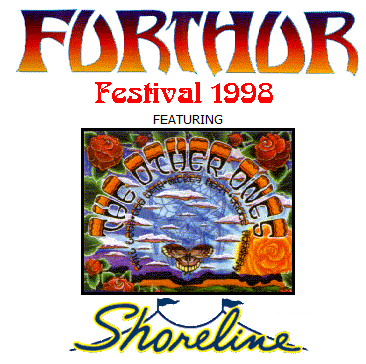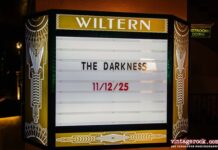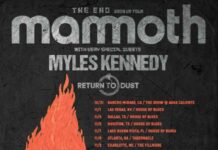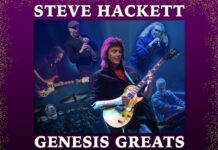By Shawn Perry
When Jerry Garcia passed away in 1995, the Grateful Dead’s 30-year musical odyssey of magic and mischief came to an abrupt end. As legions of Deadheads bade fare thee well to their beloved Captain Trips — whose penchant for chili dogs and heroin had been taking its toll for years — a big question mark lingered over the future of the good-natured nomads whom Garcia left behind.
If you’ve ever been to a Dead show, you know exactly what I’m talking about. There, and virtually nowhere else, you could find thousands of wayward individuals whose entire existence was based on one thing, and one thing only: The Grateful Dead. With Garcia out of the picture, you have to wonder what on earth happen to all these people? Did they stumble upon something else and lose the Grateful Dead in the wake of the flood? Or do they remain frozen in time, confused by the reality that their leader has fallen?
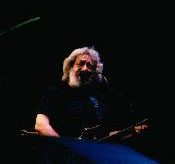
These questions were addressed in 1996 when two members of the Dead — Bob Weir and Mickey Hart — announced they were going FURTHUR — a familiar word in the Dead vernacular. Any student of the Grateful Dead’s colorful history is familiar with the infamous school bus with the word etched flagrantly above the windshield. It was around 1965 when author Ken Kesey and his band of Merry Pranksters drove the bus around the country, tripping on LSD, shooting home movies, while the Dead provided the soundtrack. Two years later, an entire movement sprung forth, culminating during the Summer of Love. Who would have guessed Garcia and company would carry the torch for another three decades, creating a sub-culture in the process.
Today, FURTHUR is a symbol of the enduring impressions and music of the Grateful Dead Family. Weir and Hart’s summer festival may have initially been set-up to keep a thriving cottage industry alive. Once you get over the commercial grind, you can recognize that FURTHUR is also keeping a lot of Deadheads alive.
The first Furthur Festival of 1996 missed its mark by several miscalculated maneuvers. Hart’s percussive foray with his group Mystery Box pretty much mystified everyone. Bob Weir and his band Ratdog had no problem covering familiar ground, although their performances seemed slow and uninspired. Hot Tuna, Los Lobos and Bruce Hornsby threw in their two-cents, but the entire festival came across as a lackluster effort to resuscitate what was left of days gone by. For now, the best a Deadhead could expect was another Dick Picks CD release, coming every 3 to 6 months.
The 1997 Furthur Festival had its moments as well, both high and low. Arlo Guthrie proved how pathetic an aging hippie can be. Robert Hunter finally faced his large audience, who were provided with the reason as to why he rarely sings the songs he writes. The Black Crowes came off a bit too aggressive, mostly with one another. Hart, Weir, Hornsby and Jorma Kaukonan kicked up some dust in several tasteful ways, dipping generously into the Grateful Dead songbook. Still, something was missing, and it wasn’t just Jerry.
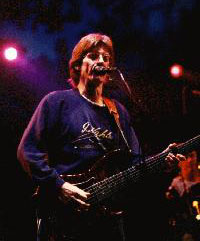
Insiders to the Grateful Dead have been known to exhibit strange quirks without rhyme or reason. One of these has been this obsession with Phil Lesh. Indeed, Lesh is an outstanding bass player and musical visionary; to Deadheads, he is THE glue that, for 30 years, kept the whole operation running. Phil’s presence at the final ’97 Furthur Festival show at Shoreline — a unique and Dead-friendly amphitheater some 50 miles south of homebase San Francisco — was enough to wake up even the wariest fan from his slumber. On that night, the seed for the Other Ones was planted.
Earlier this year, talk of a Grateful Dead reunion grew partly out of the conception of a multimedia entertainment complex to be erected in the Bay Area called Terrapin Station. The idea behind Terrapin is that it will be a place for people to experience the sights, sounds and tastes of a Grateful Dead show. Rumors have abounded, while funding and location-scouting continue, that the Grateful Dead will re-unite on Terrapin’s stage on the eve of the new millenium. Apparantly, they couldn’t wait that long.
By all counts, this summer’s Furthur Festival was the answer to a Deadhead’s prayers. The Other Ones — the festival’s headliners — features Lesh, Hart, Weir and Hornsby along with drummer John Molo, saxophonist Dave Ellis, and guitarists Mark Karan and Steve Kimock. Best of all, 95% of the Other Ones’ repertoire is the music of the Grateful Dead.
After blanketing the country for two months, Furthur ’98 concluded its run on a warm July week-end at Shoreline. With two sold-out shows, expectations were running high. Opening with “U.S. Blues” (Lesh on lead vocals), The OO’s exhibited some long-missing muscle absent from later Dead shows. The crowd was putty in their hands from the first note onward.

The real test came during the second number, “Playin’ In The Band,” a long, trolling piece that was always an improvisational launching pad for extended Dead jams. Sitting in for Garcia is a lot to ask of any accomplished musician, and the decision to bring in two unknown Bay Area players could have been disasterous. During “Playing,” Karan and Kimock took turns at blowing the doors off every preconceived notion, molding and often nodding in Garcia’s direction, ultimately adding flourishes of their own to show they were more than just stand-ins.
As if that wasn’t enough, the band then went into “The Other One” (their theme song perhaps…), and perched up next to Mickey Hart with a talking drum under his arm is none other than the Dead’s original drummer Bill Kreutzmann. It was the first time he had been on stage with his old bandmates since July 9, 1995 in Chicago when the Dead unexpectedly played their last show. Naturally the 20,000 or so went absolutely nuts. This was about as close to a full-blown Grateful Dead reunion as you could have gotten.
For the next 2 hours, with Kreutzmann on board for the most part, The Other Ones dabbled with a wide array of Dead material. Hornsby, Lesh and Weir all took their respective turns at lead vocals. Suprisingly, they played a set full of Garcia/Hunter classics such as “Ramble On Rose,” “China Cat Sunflower,” and “I Know You Rider.”
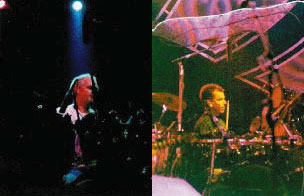
After the first Hart-Kreutzmann drums segment in two years, The OO’s headed into deep territory, pulling out such long-lost gems as “St. Stephen” and “The Eleven.” With Garcia fresh in everyone’s mind, the void felt replenished. You just had to scratch your head and wonder why the Dead stopped playing these songs almost 20 years ago.
Encoring with “One More Saturday Night” and “Touch of Grey,” The OO’s (with Jorma Kaukonan sitting in) ended the show, bowing and hugging, victorious in making Furthur Festival ’98 a hit. The energy level had that familiar ring and resonance. Jerry Garcia is gone, but the spirit of the Grateful Dead was alive and well in Shoreline. For almost three hours, it was an incredible simulation.
Proceeding The Other Ones, Kaukonan’s Hot Tuna, a Bay Area favorite and FURTHUR mainstay kicked into with their brand of blues-driven boogie woogie. The rhythmically-fired Rusted Root opened the festival. Both groups managed to favorably warm up the thousands of Deadheads who invaded Mountain View.


